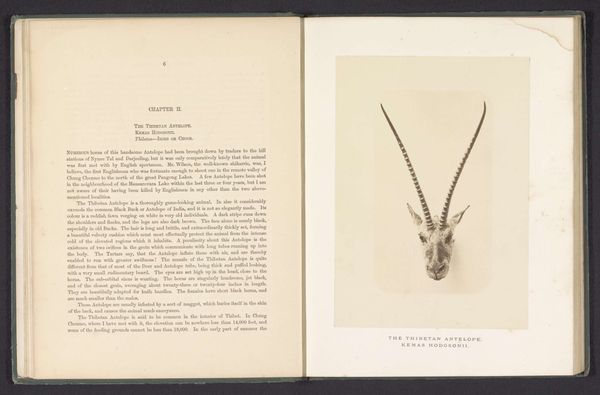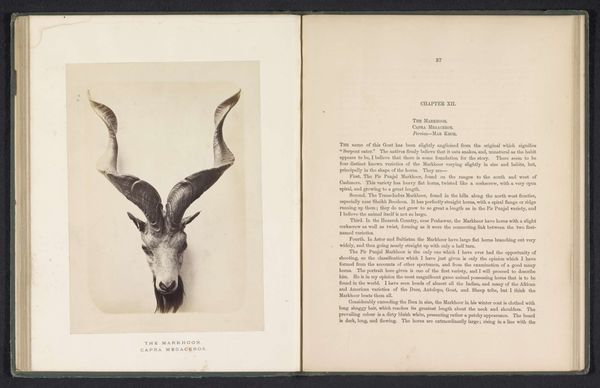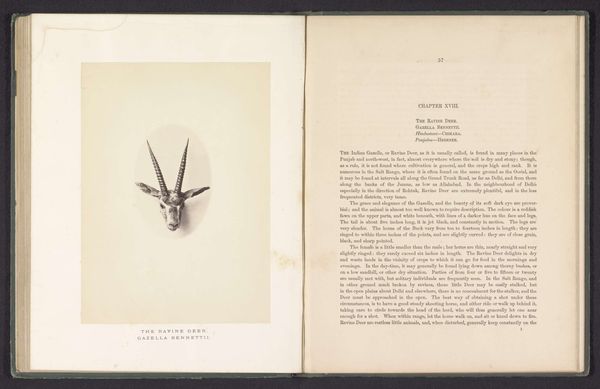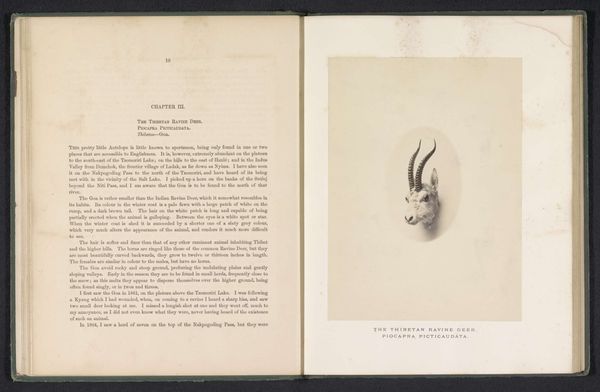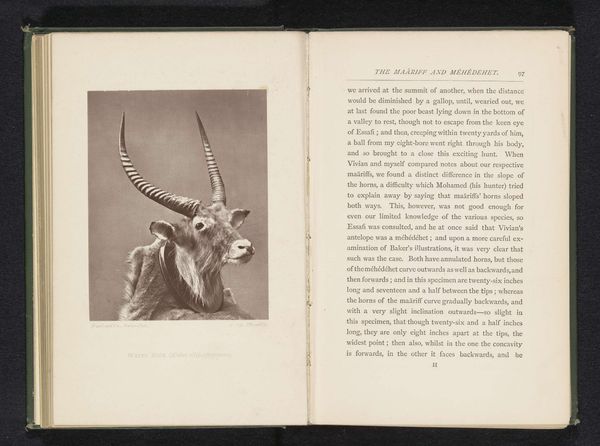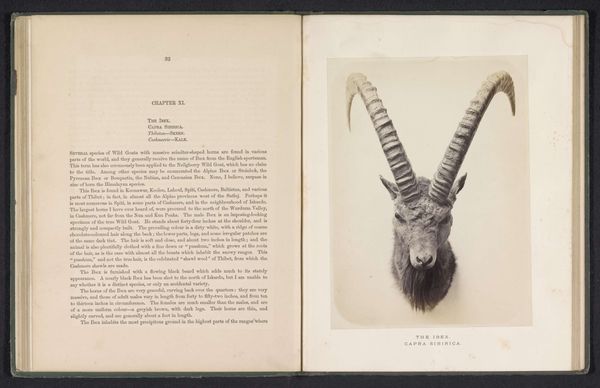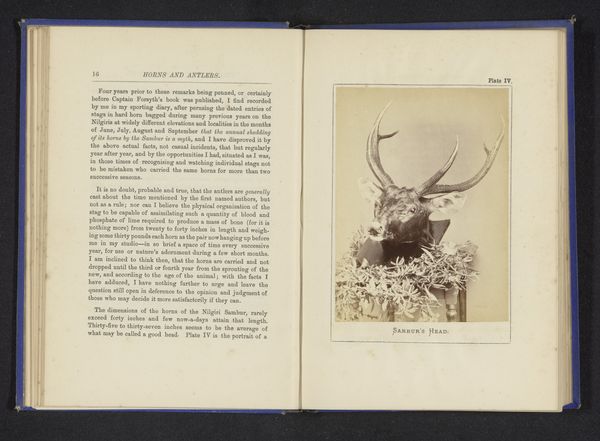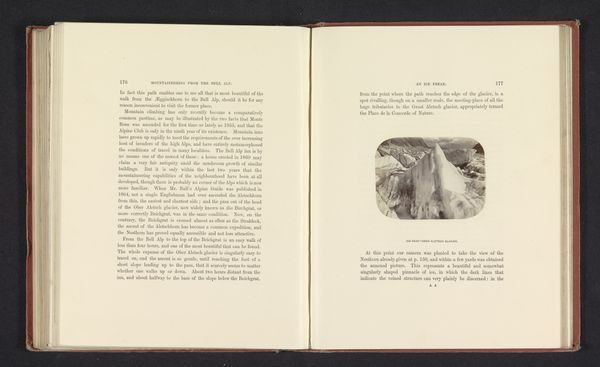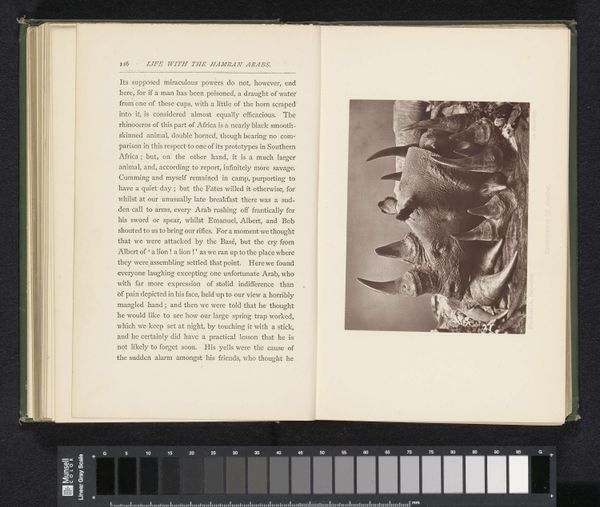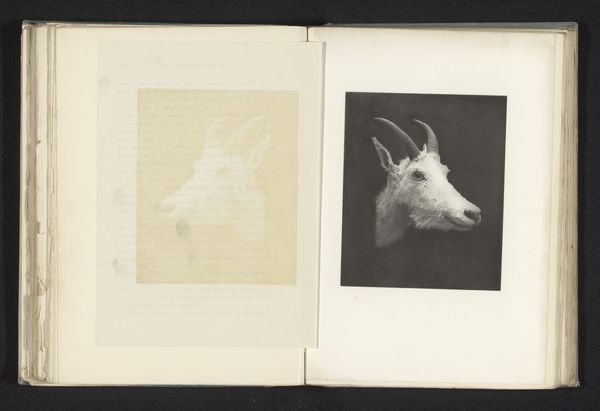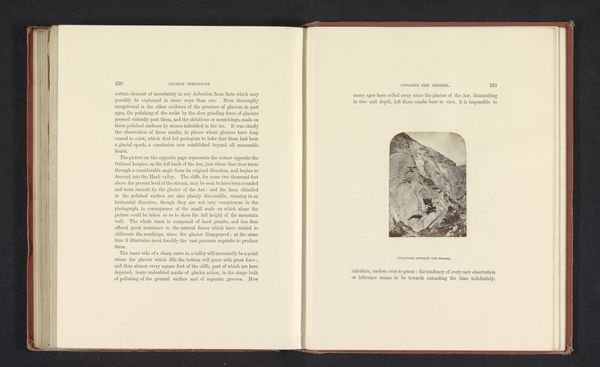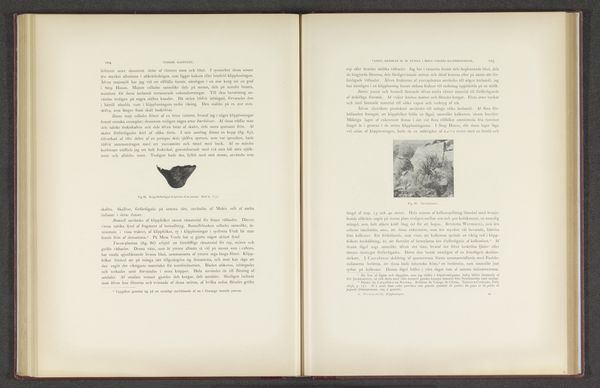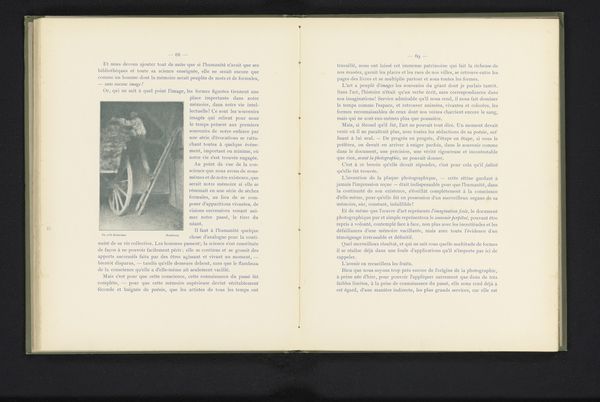
print, photography
#
portrait
# print
#
photography
#
orientalism
#
naturalism
Dimensions: height 198 mm, width 145 mm
Copyright: Rijks Museum: Open Domain
Editor: So, this photograph titled "Opgezette kop van een Indiase gazelle" or "Stuffed head of an Indian Gazelle," before 1869 by Arthur Lucas, it’s striking how the sepia tones give it such a strong antique feel. It makes me wonder what symbolic role the gazelle may have had during this period. What do you make of it? Curator: The gazelle here functions as more than just a portrait. It represents a complex nexus of colonial interests and scientific inquiry. Consider the practice of taxidermy during this era. It speaks volumes about how cultures sought to capture, classify, and control the natural world. Look at how the animal is presented – disembodied yet majestic. Editor: I see what you mean; it is presented more as a specimen, carefully captured for study. The detail of the horns, in particular, does seem almost…clinical. Do you think that relates to a broader symbolic understanding of nature? Curator: Absolutely. Notice how it also evokes Orientalist tropes popular at the time? The gazelle, indigenous to India, becomes a symbol of the exotic "other," framed for European consumption. What emotional impact do the gazelle’s eyes have? Editor: They seem glazed, fixed…lifeless, which heightens the sense of the animal being reduced to an object. I now realize the gaze of the photograph acts in many ways as a symbol for the relationship between science, colonialism, and nature itself. Curator: Exactly. By examining the cultural associations embedded in this image, we reveal how animals were used to reinforce certain cultural narratives. Every detail tells a story far beyond what we initially observe. Editor: I see this photograph now as something far deeper, speaking to a moment in time where the lines of science and culture blurred to transform animals into lasting, but silent, artifacts.
Comments
No comments
Be the first to comment and join the conversation on the ultimate creative platform.
